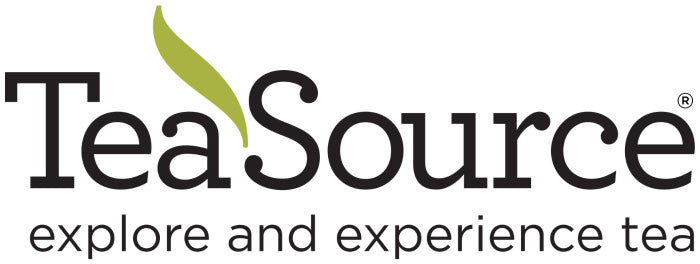The most subtle way to apply tea to your beer is to substitute tea for your aromatic hops. These hops are added in the last 5-10 minutes of the boil. They add a lot to the nose but are pretty subtle in the sip. Tea has an intense aroma so a little can go a long way. I typically use one ounce of tea in the last five minutes of the boil, (5 gal. batch) unless I’m making an IPA and then use 2 ounces. You can put the tea in a large infuser tea ball or in a large #4 size T-sac. I find this method works best with straight black teas. Green and white teas are quickly overwhelmed by the beer and any hops you may be using. If you’re not sure what black tea to add to your beer, these basic flavor profiles will give you a place to start. Darjeeling- Crisp and slightly astringent. Subtle fruit notes. Great for IPAs. Ceylon- Brisk, medium-bodied tea from Sri Lanka, good for pale ales or IPAs. Yunnan- Medium-bodied woodsie Chinese black, awesome in Belgian beers. Keemun- Rich and earthy Chinese black tea. Great for porters & scotch ales. Assam- Very strong and malty Indian black tea. Perfect for stouts.
2) Put Tea in the Carboy- First or Secondary Fermentation
My favorite way to add tea to beer is to add it to the carboy after the initial fermentation has slowed down or when the beer is moved to the secondary fermenter. This method works great for both straight and flavored teas, both black and green teas, and everything in-between. Just put an ounce or so of tea per 3-5 gallons beer. I find the #4 T-sac works really well here because the t-sac weave is finer than the cloth steeping bags you buy at homebrew stores. Only fill the T-sac a third full to allow the leaves to expand and release their flavor. You can use multiple t-sacs, just staple the top closed. They will typically float on the top of the beer slowly oozing flavor. I like to keep them in for at least a week or two, then taste the beer and take the t-sacs out if the flavor is strong enough. This method will typically give your beer a smooth and strong tea flavor.
3) Add Tea as a Concentrate at Bottling The final method I have tried when adding tea to beer is to make a concentrate of tea and add it to the bottling bucket with the priming sugar before you bottle your creation. This works especially well for flavored teas, but it can be used for straight teas too. Use an ounce of tea for 3-5 gallons of beer. Steep this ounce of tea in about 2 cups of water. Use the water temperature and steep time that is recommended on the tea package.
That’s it! If you have questions or comments- or just want to chat about home brewing with tea- I can be reached at our Eden Prairie store. edenprairie@teasource.com Make It So! And here's a bit of fun - Summit Brewing's brewer Nick Hempfer developed a new beer in their Unchained Series that will feature TeaSource's Earl Grey White Tip! Some of us had an opportunity to try their pilot batches - you can read more about the inspiration behind this beer (Star Trek!), tasting notes, and our visit to Summit on Summit's blog.
Finally, below is my personal list - beers I've brewed and beers I would like to try.
Enjoy!
Jess Hanley
Eden Prairie manager
Tea Beers (things I made and liked)
Sour Wheat beer with Rhubarb Oolong tea- made 2011
Sour Wheat with Black Beauty Tea- made 2011
Ginger/Hibiscus Petite Saison- made 2012/2013/2014/ and 2015- Favorite!
Petite Saison with Chamomile- made 2012
First Flush Darjeeling India Pale Ale- made 2012
Dark Rose Porter- made 2012
Sweet Ginger Green Tea Shandy- made 2013
London Ale with coriander, bitter orange peel, and Earl Grey tea- made 2013
Montana Gold cinna-mead- made 2014
Cider with Blueberry Fields Black tea and chilis- Made 2013/ 2014
Cider with Rhubarb Oolong tea and Ginger- made 2013/ 2014
Chai Spice Pumpkin Porter- 2014
Irish Honey Ale with Brandy Oolong/ Roasted chestnut/ China Black Special/ and Lapsang Souchong- (four small batches) 2015
Orange blossom honey Mead with orange peel, spices, and Earl Grey tea- 2015
Recipe ideas
Scottish Ale with Ti Kwan Yin Oolong
Smoked Malt Lapsang Souchong
Smoked Stout Roasted Chestnut Tea -Nut Brown Ale
Golden Tip Yunnan Belgian
Triple Milk Oolong Cream Ale
Blue Beauty Oolong (ginseng and licorice) Pale Ale
Mango Tango/ Raspberry Beret Black Tea Barley Wine
Candy Apple White Tea Lager
Silver Bud White Tea Kolsh/ Darjeeling Kolsh







Comments
Hi there! Great post and video on Chop and Brew! I’m currently living in Yunnan, China, and would really like to use local Pu-er in a beer. I didn’t see any specific recommendations on your list, kind of remember you mentioning it on the CnB video. Since most Puer is earthy, i was thinking that any heavy darks would be good (Belgian dark, Scottish heavy, porters, stouts, etc.)—thinking a honey porter would do well and will probably be my first. Any suggestions for using certain Puers with light styles, or any Puers you’ve come across that lend well to brewing? Cheers and please get in touch if you’re ever in the Yunnan region!
Interesting concept!
Love the idea of a Darjeeling kolsch. So much so that I may just have to steal it off you. In fact, I’m committed to doing so! Great post :)
Cameron
Http://grizzlybearloveskolsch.com